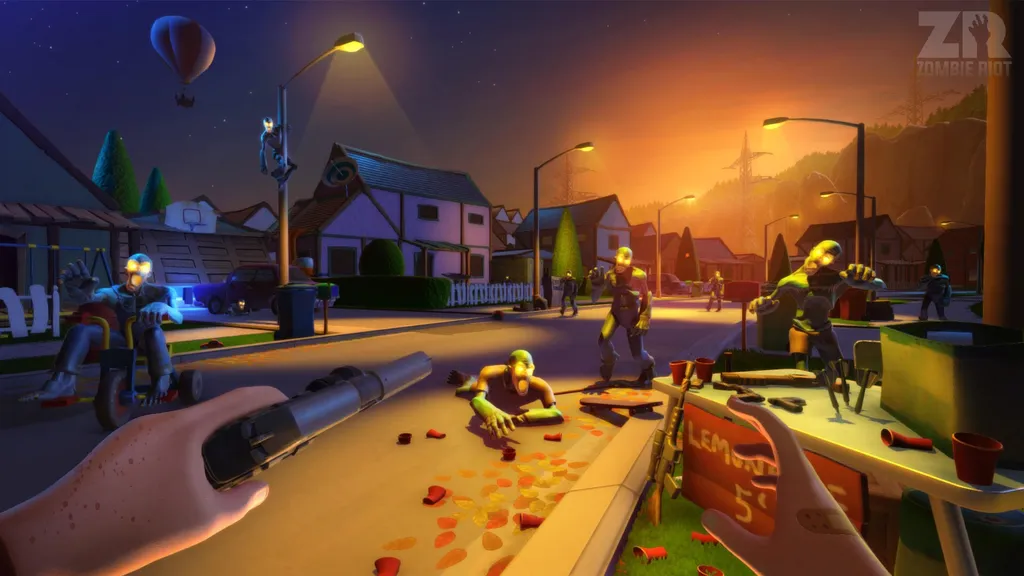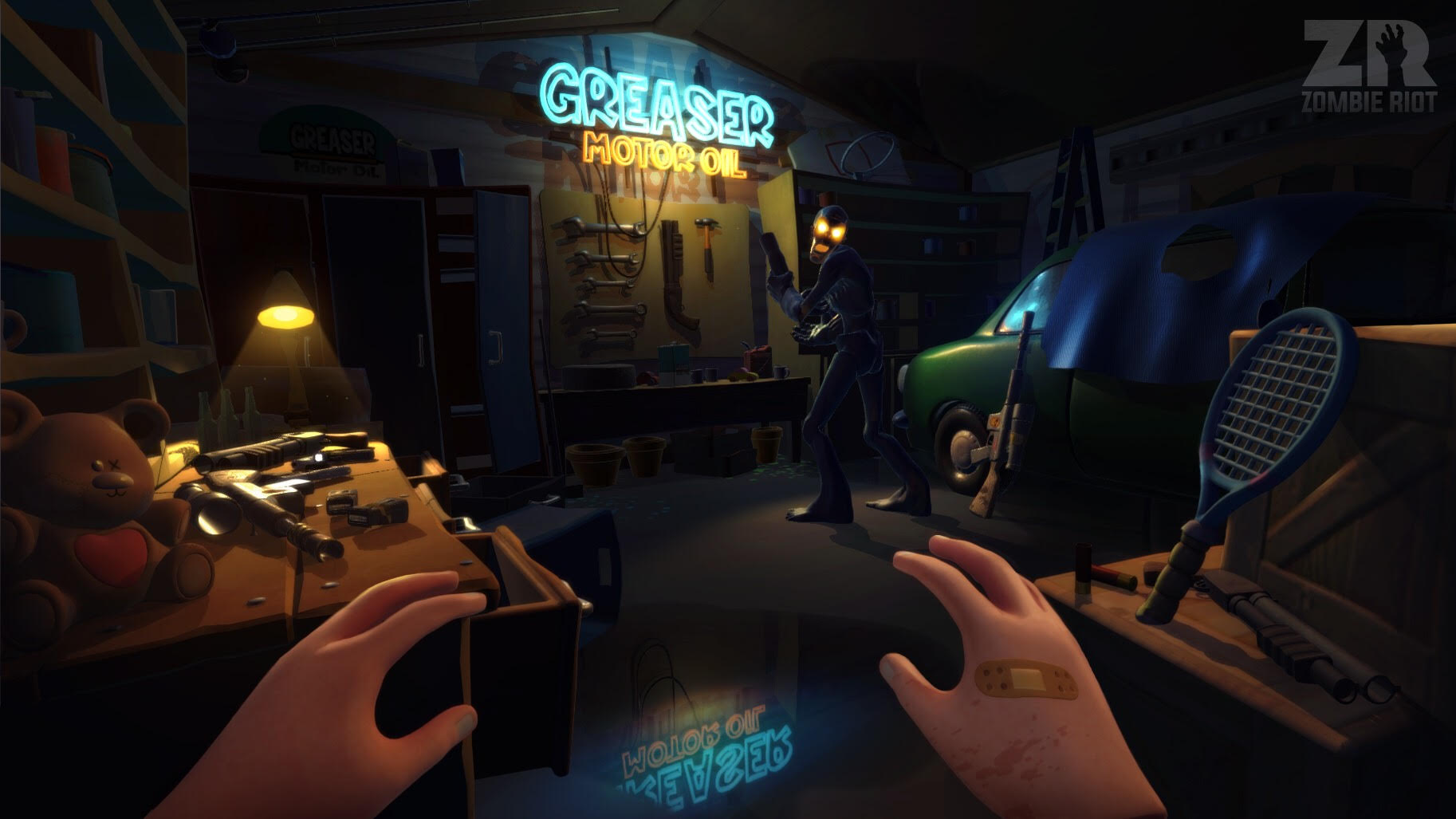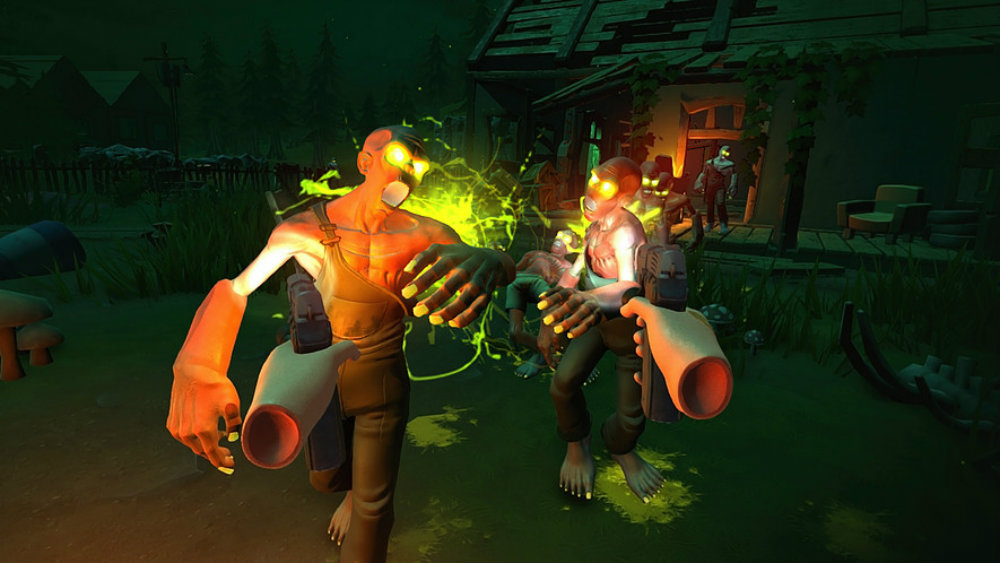Cutting through the noise in the game industry is tough. One could argue that there is no more competitive market for burgeoning game developers than the mobile gaming scene, with millions of potential customers on Android, iOS, Windows, and more, as well as countless entry points and development programs making game creation as democratized as ever. For PlaySide, an established mobile game development studio based in Australia, success hasn’t been impossible to secure, but it hasn’t been easy either. And now with VR making its case for the next great platform of interactive entertainment, PlaySide VR was created to seize the opportunity utilizing their debut IP, a zombie-based wave shooter known as ZR: Zombie Riot.
Last month, UploadVR broke the story on the game and studio announcement, pulling back the curtain on the project and shining a light on what is sure to be one of VR’s biggest up and coming developers. Now, at E3 2016, we got the chance to go hands-on with their first VR title and find out whether or not it’s really as engaging as they promised.
Debuting on Oculus Touch
The swirl of scandalous fervor around the Oculus platform over the past week has been too loud to ignore. We’ve covered the news about Oculus signing deals with companies to gain exclusive rights to their games on the Oculus platform, either as a timed agreement or indefinitely, and Palmer Luckey himself has even commented on the topic to media outlets recently as well. While ZR: Zombie Riot has no plans of remaining exclusive to the Oculus Rift using the Touch controllers, that is where the game will be launching later this year.
As we pointed out in our side-by-side Touch vs. Vive controller comparison, that’s far from a bad thing. The Touch controllers feel great in your hand and make it incredibly easy to jump in and play anything very quickly. During PlaySide VR’s target practice tech demo, I was easily knocking down targets with little trouble. Once I jumped into the actual game, I was getting so many headshots I had to ask if they were using an aim assist of some kind and they informed me that wasn’t the case.
The biggest negative that I found during my demo though, resulted from the use of the Oculus Touch controllers themselves. I noticed on a few occasions if I turned around to look behind me, that my controllers would lose tracking. However, this is primarily due to the default side-by-side placement of the cameras, as seen in the video above, as presumably the issue would be resolved and provide 360-degree tracking if they were placed opposite one another like HTC Vive base stations.
As we reported previously, ZR: Zombie Riot is a visually striking zombie wave shooter, which on paper, sounds awfully familiar. The likes of The Brookhaven Experiment and countless others have made sure that the VR scene is far from wanting in the zombie game department. But what ZR does differently is what makes it so special.
Breaking Boundaries
For one thing, it’s essentially the first game of its type on the Oculus Rift using the Touch controllers. A new entry in the Killing Floor series and a new Serious Sam VR game were announced at E3 last week, but neither are really that similar. This gives ZR: Zombie Riot an edge as opposed to its Vive-based competition.
Furthermore, the gameplay and visuals are designed from a perspective of being decidedly accessible and fun. You’re not expected to rip off the headset in terror as the hordes of undead advance upon you, and you’ll likely spend more time smiling than cowering in fear. It’s bright, it’s silly, and it’s surprisingly cheerful. In addition to that, it’s just super easy to pick up and play. By utilizing the intuitive nature of motion-tracked controllers, the folks at PlaySide VR are able to eschew the layers of complexity like menus and faux-interaction that plague other games and instead just ask people to pick stuff up, swing, point, and shoot.
The biggest differentiating factor however, is the crafting system. My demo at E3 only consisted of a few waves since the weapon modification features weren’t available in my build, but I saw plenty of footage of it in action to see how it works. Essentially, most items in the environment can be combined with others to create and change weapons. The team at PlaySide gave the example of dousing a teddy bear in gasoline to become a pseudo-molotov cocktail.
Since I didn’t get to try this for myself yet, I can still say that the core gameplay itself feels incredibly solid and accurate. Whereas the majority of zombie games in VR aim for a gritty, dark vibe that isn’t appealing to all players, ZR: Zombie Riot goes for an aesthetic that feels more like a Saturday morning cartoon than a Friday night spook fest.
PlaySide VR doesn’t have a release date for ZR: Zombie Riot yet, since that depends on when the Oculus Touch controllers will release later this year, but they are intending to be a launch title for the device. And while the company can’t discuss details at this time, they’re also in negotiations with Hollywood studios about bringing well-known movie properties into the VR space as well. Presumably, by leveraging their stable of contacts from experience with licensed mobile games.
Hopefully we can grab some more time with ZR: Zombie Riot soon to get a feel for how the full game functions, but as it stands, it feels fast, smooth, and fun as hell.




























